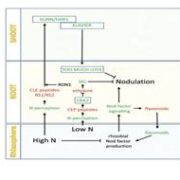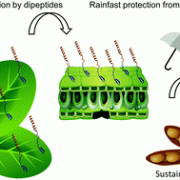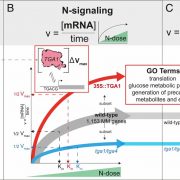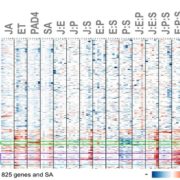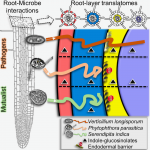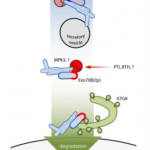Coordination between microbiota and root endodermis supports plant mineral nutrient homeostasis (Science)
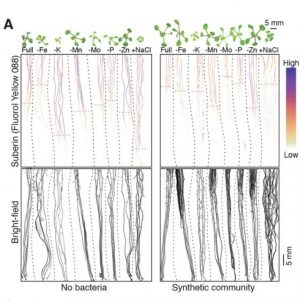 Roots have been described as the gut of the plant, as they are the main interface for nutrient and water intake from their surrounding environment. This interface is remarkably complex. Not only must the root allow for the proper diffusion of substances into the plant, but by virtue of being constantly exposed to an entire microbiome, it must also act as a “control point” for plant immunity. Are these processes — nutrient intake/diffusion and microbiome maintenance — integrated together, and if so, how? Salas-González et al. piece together an intricate story that supports a relationship between root diffusion function and microbiome maintenance. Mutations in genes that regulate physiological root diffusion traits resulted in plants with altered microbiomes; likewise, variation in microbiomes resulted in alterations of root diffusion traits, focused primarily on suberization phenotypes. In one experiment, wild-type plants were grown either under sterile conditions or with microbiome inoculation, then subjected to nutritional stress; inoculated plants demonstrated suberization and subsequent ionome phenotypes that indicate microbiome presence as important factors for acclimation to nutrient stress, accomplished through modulation of suberin deposition. The authors cap this work with transcriptome and genetic analyses that suggest this suberization modulation is accomplished by the microbiome repressing abscisic acid response. This work elucidates a fundamental relationship between plants and their microbiomes that will allow us to better understand plants’ abilities to adapt in various environmental conditions. (Summary by Benjamin Jin) Science 10.1126/science.abd0695
Roots have been described as the gut of the plant, as they are the main interface for nutrient and water intake from their surrounding environment. This interface is remarkably complex. Not only must the root allow for the proper diffusion of substances into the plant, but by virtue of being constantly exposed to an entire microbiome, it must also act as a “control point” for plant immunity. Are these processes — nutrient intake/diffusion and microbiome maintenance — integrated together, and if so, how? Salas-González et al. piece together an intricate story that supports a relationship between root diffusion function and microbiome maintenance. Mutations in genes that regulate physiological root diffusion traits resulted in plants with altered microbiomes; likewise, variation in microbiomes resulted in alterations of root diffusion traits, focused primarily on suberization phenotypes. In one experiment, wild-type plants were grown either under sterile conditions or with microbiome inoculation, then subjected to nutritional stress; inoculated plants demonstrated suberization and subsequent ionome phenotypes that indicate microbiome presence as important factors for acclimation to nutrient stress, accomplished through modulation of suberin deposition. The authors cap this work with transcriptome and genetic analyses that suggest this suberization modulation is accomplished by the microbiome repressing abscisic acid response. This work elucidates a fundamental relationship between plants and their microbiomes that will allow us to better understand plants’ abilities to adapt in various environmental conditions. (Summary by Benjamin Jin) Science 10.1126/science.abd0695




